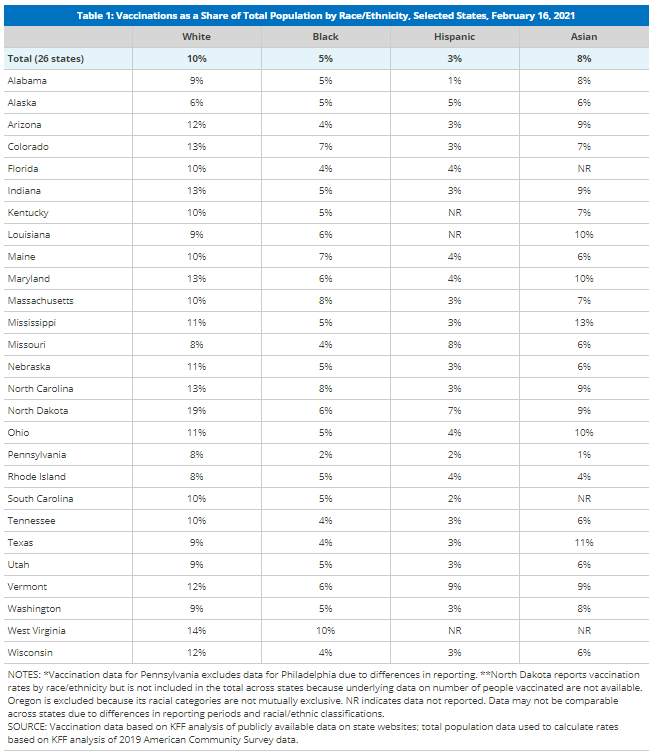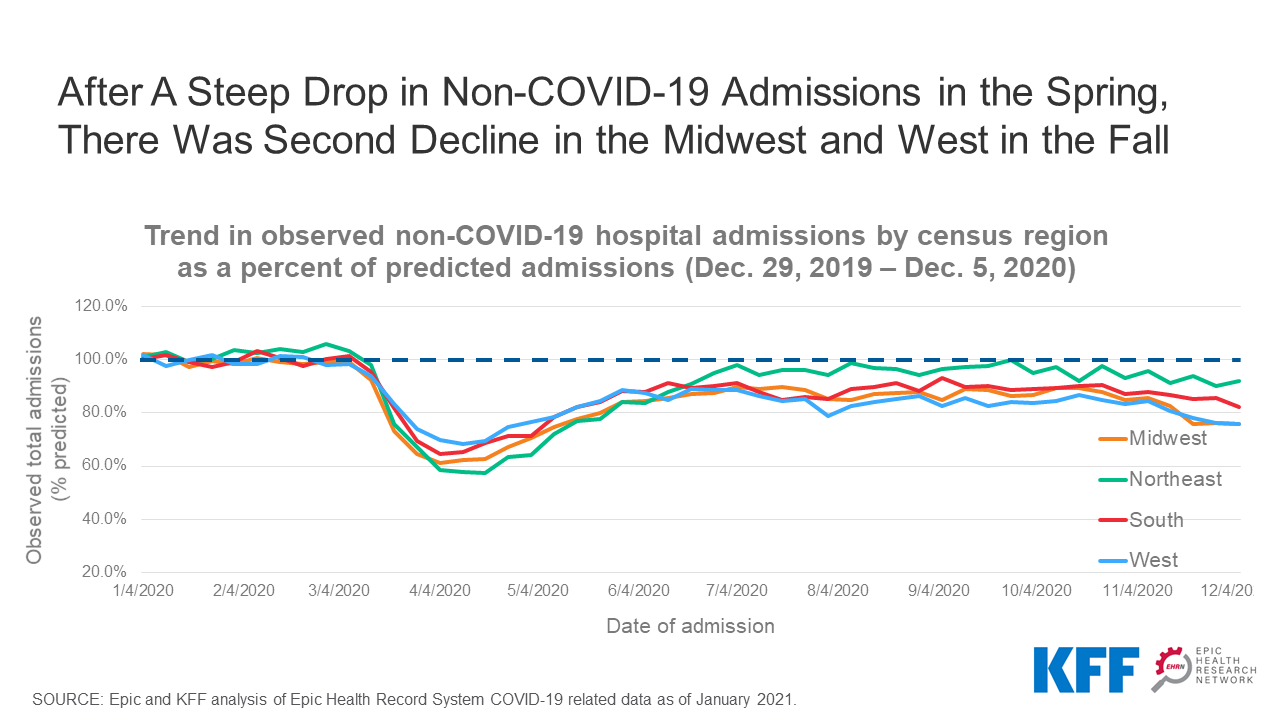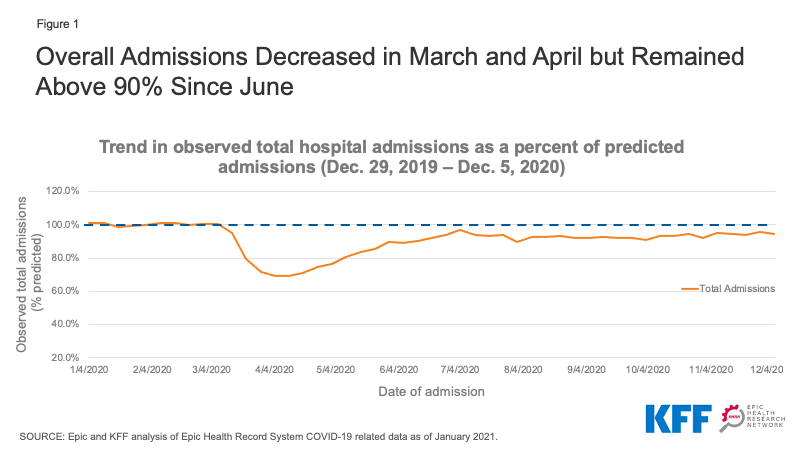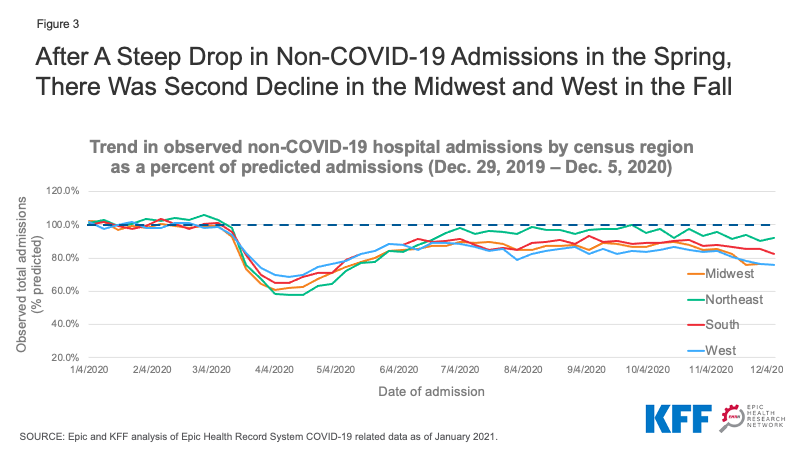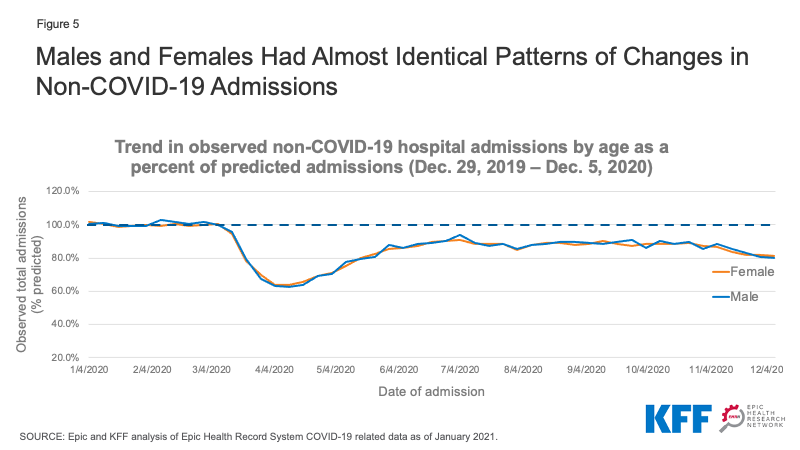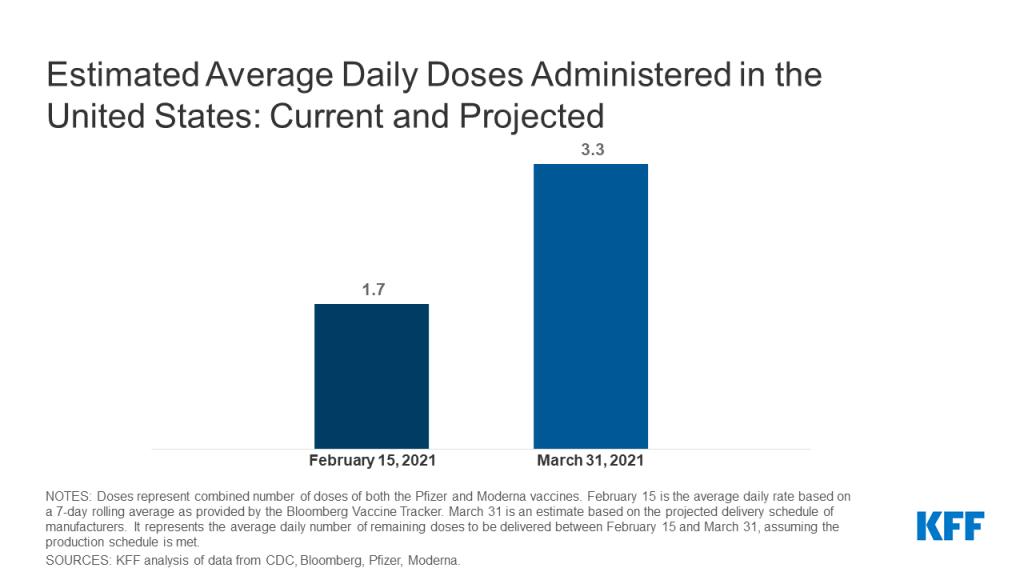Key Points
- One of the most daunting and urgent challenges facing the world as it seeks to address the COVID-19 pandemic is ensuring broad access to vaccines, without which it will be impossible to achieve needed levels of global population immunity.
- To date, the majority of vaccine doses (56%) have been purchased by high-income countries, who only represent 16% of the global population, locking in much of the market. In addition, while many high-income countries have started to vaccinate their populations, as of February 8, fewer than 100 doses have been administered in low income countries.
- COVAX, an international partnership led by the Coalition for Epidemic Preparedness Innovations (CEPI), Gavi, the Vaccine Alliance, and the World Health Organization (WHO), was created to respond to this challenge. Its goal is to distribute 2 billion doses of a safe and effective COVID-19 vaccine to the most vulnerable by the end of 2021.
- While virtually all countries are participating in COVAX, until recently, the U.S. was one of only a handful to sit out formal participation, when the Trump administration decided not to join, although Congress did provide $4 billion in emergency COVID-19 relief to Gavi in support of COVID-19 vaccine access, which Gavi says it will use to support the AMC. On January 21, 2021, soon after taking office, President Biden announced that the U.S. would join COVAX and play a more active role globally on COVID-19.
- Although COVAX has purchased 1.1 billion doses to date, with most of these doses to be distributed to lower-income countries, it ended 2020 with a funding gap of $755 million and faces a gap of $6.4 billion in 2021. There are also numerous other challenges including competing with bilateral and regional agreements to secure vaccine doses and navigating diverse regulatory landscapes.
- There are also key questions about the nature of U.S. participation including how much funding the U.S. will provide for COVAX going forward, either as a self-financing country to access vaccines in the COVAX portfolio and/or as a donor to the COVAX advance market commitment intended help supply vaccines for low- and middle-income countries, and if the U.S. will donate surplus doses to COVAX in the future.
Introduction
One of the most daunting and urgent challenges facing the world as it seeks to address COVID-19 is ensuring broad access to vaccines, including in low- and middle- income countries (LMICs). Not only has this been seen as a moral imperative, it is critical for achieving the levels of global population immunity needed to curb the ongoing pandemic. In addition, a recent analysis found that high income countries will bear significant, additional economic costs if broad, global vaccine access is not achieved. Yet most vaccine doses have already been purchased by high-income countries; whereas they represent just 16% of the global population, high income countries have purchased 56% of vaccine doses. In addition, while many high-income countries have started to vaccinate their populations, as of February 8, fewer than 100 doses had been administered in low income countries. Furthermore, due to development and manufacturing constraints, it is estimated that there will not be enough vaccine doses to cover the world’s population until at least 2023, or, by other estimates, 2024. COVAX, an international partnership led by CEPI, Gavi, and the WHO, is a global partnership created to respond to this challenge. Virtually all countries are participating in COVAX
While the United States has historically played a major role in responding to global health emergencies, the Trump administration decided not to join COVAX, making the U.S. one of only a handful of countries not to do so. Soon after taking office, on January 21, 2021, President Biden announced that the United States would join COVAX and play an active role globally on COVID-19.
This brief provides an overview of COVAX and identifies key questions and issues to consider for U.S. engagement.
History & Mission
In April 2020, at an event convened by the World Health Organization (WHO), France, the European Commission, and the Bill & Melinda Gates Foundation, the Access to COVID-19 Tools (ACT) Accelerator was launched to help the global community combat the COVID-19 pandemic. The ACT Accelerator brings together governments, scientific and regulatory experts, philanthropies, and global health organizations to focus on four main pillars: 1) diagnostics, 2) treatment, 3) vaccines, and 4) health systems strengthening. Each of the pillars is led and coordinated by different multilateral institutions. COVAX is the vaccine pillar of the Act Accelerator. COVAX’s goal is to distribute 2 billion doses of a safe and effective COVID-19 vaccine to the most vulnerable by the end of 2021.
Organizational Structure
Governance
COVAX’s three lead organizations—CEPI, Gavi, and the WHO—coordinate its various operations. Vaccine development and manufacturing functions are led by CEPI, procurement and delivery functions by Gavi, and allocation policy by the WHO.
- CEPI – CEPI manages the COVAX R&D vaccine portfolio including the selection of potential candidates as well as providing direct financial support for vaccine development. The portfolio includes multiple vaccine candidates in order to mitigate the risks of one or more candidates failing to be proven effective and safe. CEPI also secures agreements with manufacturers to accelerate scale-up and production. As of January 2021, CEPI had reserved manufacturing capacity with 13 manufacturers.
- Gavi – Gavi leads the COVAX Facility, which is the procurement mechanism of COVAX. Gavi works with manufacturers, participating countries, and private donors to secure vaccine dose orders. In addition, Gavi assists low- and middle-income countries with delivery preparedness through technical assistance and financing cold chain equipment.1
- WHO – The WHO leads the development of an allocation policy framework to establish guidelines for equitable and effective distribution. The WHO also provides all countries with guidance on delivery preparedness, and, similar to Gavi, assists low- and middle-income countries with delivery preparedness through technical assistance and financing cold chain equipment.
Country Participation
While participation in COVAX is entirely voluntary, almost all countries are participating in some way, including 190 governments and economies as of January 2021. Countries may join as either “self-financing” countries (high-income countries) or “funded countries” (low- and middle-income countries) (See Table 1).
- Self-Financing (High Income) Countries: Self-financing countries are responsible for paying for their participation in COVAX, including providing upfront payments and procurement costs, to have access to the COVAX portfolio. To date, 90 countries and 8 economies have committed to join COVAX as self-financing, and an additional 6 countries have signaled intent to participate.
- Funded (Low- and Middle-Income) Countries: Low- and middle- income countries are eligible to participate in the Gavi COVAX Advance Market Commitment (AMC), a financial mechanism to enable them to access vaccines that they would otherwise be unable to afford. 92 countries are eligible to participate in the Gavi COVAX AMC as funded countries. Funding for the AMC is through provided by separate contributions from public and private donors.
With 190 governments involved, more than 90% of the global population is affiliated with COVAX.
| Table 1: Self-financing v. Funded Countries in the COVAX Facility |
| Self-financing countries | Funded countries |
| Number of participating countries | 902 countries and 8 economies have signed commitment agreements and an additional 6 have signaled intent to participate. | 92 countries are eligible to participate in the AMC. |
| Eligibility requirements | None | GNI per capita less than $4,000 or World Bank IDA-eligible |
| Deadline for countries to commit | The original deadline to commit was September 18, 2020, with upfront payments due October 9, 2020. | Applications to confirm participation opened on November 13, 2020 and were due December 7, 2020. 88 countries have submitted vaccine requests. |
| Funding structure | Two payment options:- Committed purchase option – Cost of this plan includes an upfront cost of $1.60 per dose and purchasing agreement of $8.95 per dose. (30 countries have agreed to this option.) Countries with this agreement may only opt out of purchasing a vaccine candidate if they have indicated in their commitment agreement to not purchase vaccines with prices exceeding $21.10 per dose.
- Optional purchase option – Cost of this plan includes an upfront cost of $3.10 per dose, purchasing agreement of $6.20 per dose, and risk-sharking cost of $0.40 per dose. (39 countries have agreed to this option.3 ) Countries under this agreement can decide to opt out of purchasing certain candidates either before entering the COVAX Facility through its participation agreement or once the COVAX Facility confirms orders with a manufacturer.
Additionally, all self-financing countries will be required to pay a speed premium (used to accelerate manufacturing) and a COVAX Facility operation fee. | The Gavi COVAX AMC is funded primarily through contributions from public and private donors which in turn support the provision of vaccine doses to funded countries. Funded countries wishing to receive more than their allotted amount of doses may elect to provide additional funds through a tiered cost-sharing obligation. Support from multilateral development banks may be utilized to cover cost-sharing obligations. |
| Initial doses countries in financing group may receive | Self-financing countries can request enough doses to vaccinate 10-50% of their populations, depending on their level of investment. | Funded countries will receive enough doses to vaccinate up to 20% of their populations.4 |
| Projected doses to be received from COVAX in 2021 | 485 million | 1.8 billion |
Activities
Vaccine Research & Development and Manufacturing
COVAX supports the research and development as well as manufacturing of vaccines through the establishment of a vaccine portfolio managed and led by CEPI. CEPI, after expert review, determines whether or not to include a vaccine candidate in its portfolio and oversees the financing of vaccine candidate development. In addition, CEPI identifies potential manufacturing partners and provides technical and financial support in preparation for the eventual production of an approved vaccine (see Financing section). There are currently 11 vaccine candidates, with 9 in clinical trial phases, in CEPI’s portfolio. COVAX has the right of first refusal of approved vaccines from candidates included in the CEPI portfolio (currently up to 1 billion doses). However, COVAX is not limited to procuring vaccines from the CEPI R&D portfolio and can also secure doses from candidates that have not received CEPI funding.
Vaccine Procurement and Delivery
As mentioned above, the COVAX Facility, led by Gavi, is a centralized purchasing mechanism. It is responsible for negotiating pricing with manufacturers through pooled purchasing that is made possible because of advance purchase agreements with participating countries. Any country may participate in the COVAX Facility, with terms of participation differing based on income level (see Country Participation section).
To date, COVAX has purchased 1.1 billion doses through signed agreements, with an additional 900 million optioned. COVAX also anticipates securing additional doses through the CEPI portfolio. The COVAX procurement portfolio includes a mix of vaccine candidates not included in the CEPI portfolio (3 developers), candidates included in the CEPI portfolio (2 developers), as well as right of first refusal to CEPI-funded candidates that have not yet received regulatory approval.5 However, the majority of the doses secured by COVAX are from manufacturers that have yet to receive regulatory approval for their vaccines, including those from Janssen, Sanofi/GSK, and Novavax.
| Table 2: COVAX Procurement Portfolio |
| Developer/manufacturer | Doses | Confirmed or reserved | CEPI-funded | Clinical trial and licensure phase6 |
| Pfizer | 40 million | Confirmed | No | Approved for emergency use by the WHO. |
| AstraZeneca | 270 million | Confirmed | Yes | Approved for emergency use by the WHO. |
| Janssen | 500 million | Confirmed | No | Regulatory review |
| Novavax | 100 million | Confirmed | Yes | Phase III |
| Sanofi/GSK | 200 million | Confirmed | No | Phase I/II |
| AstraZeneca/Novavax7 | 900 million | Optioned | Yes | Various stages of development and licensure |
| CEPI R&D Portfolio8 | 1 billion | Confirmed | Yes | Various stages of development and licensure |
COVAX also plans to create a COVAX Exchange. The COVAX Exchange will act as a marketplace for countries, including high income countries, to trade allocations of vaccine doses they may not want or need. Countries may also donate unwanted doses to funded, or AMC-eligible, countries. For example, Norway announced plans to donate its extra vaccine doses through the COVAX Facility, and other countries are considering doing the same including the U.S., which has announced that it will develop a framework for donating its surplus vaccine, including through COVAX.
In addition to vaccine procurement, COVAX is coordinating efforts to help prepare low- and middle- income countries for vaccine delivery, including procuring equipment necessary for the delivery of a COVID-19 vaccine such as syringes and cold chain storage,9 as well as providing guidance and assessment tools to support all countries in their vaccine delivery efforts.
Related to vaccine delivery, COVAX plans to create a no-fault compensation fund to protect LMICs from liability issues resulting from vaccine-related adverse events. LMICs wishing to participate will be required to indemnify manufacturers against liability claims in order to utilize this fund to compensate affected individuals. The fund will be funded by a levy of $0.10 per dose. COVAX is also currently working to identify a third-party to cover the costs of damage claims on behalf of funded countries in cases where the claimant pursues damages under local law.
Vaccine Allocation
COVAX plans to follow an allocation framework proposed by the WHO in order to ensure equitable distribution among all participating countries. The framework recommends that all countries, regardless of income, receive an initial supply sufficient to cover 3%10 of their populations, targeting health care and frontline workers, and then receive enough additional doses to vaccinate a total of 20%11 of their populations to cover higher-risk individuals (Phase 1). After this, countries may receive doses to vaccinate an additional 30-50% of their populations, depending on their agreements with COVAX (Phase 2). COVAX may give prioritization to certain countries based on factors such as threat (a country’s risk of severe impact from COVID-19) and vulnerability (a country’s ability to address threat based on its health system capacity).12 COVAX will also maintain a buffer supply of approximately 5% of available doses to respond to acute outbreaks or humanitarian needs.
COVAX plans to begin distributing vaccine doses to all AMC countries for the vaccination of health and social workers in February 2021. In the second half of 2021, additional doses will be delivered to cover the remaining portion of the Phase 1 population, for a total of 1.8 billion doses in 2021. Phase 2 delivery is not expected until 2022. For higher-income countries, COVAX expects to deliver 485 million vaccine dose orders beginning in the second half of 2021. COVAX recently released its early 2021 distribution plan, stating its intent to deliver 336 million doses of the AstraZeneca vaccine and 1.2 million doses of the Pfizer vaccine in the first half of 2021.
| Table 3: COVID-19 Vaccine Allocation Plan for AMC Countries |
| Phase | Population | Estimated percentage of population to be covered | Delivery timeline |
| Phase 1 – Tier 1 | Frontline workers in health and social care settings | 3% | February 2021 |
| Phase 1 – Tier 2 | High-risk individuals13 | 20% | Second half of 2021 |
| Phase 2 | Weighted allocation based on country’s risk assessment. | 30-50% | 2022 |
Financing
To date, COVAX has received approximately $6.35 billion in funding to support its efforts. This funding is comprised by a mix of direct contributions from donor governments, multilateral organizations, and private organizations ($3.95 billion) as well as prepayments from self-financing countries ($2.4 billion14 ) (See Vaccine Procurement and Delivery section above). Despite the significant resources that have already been made available, it is estimated that an additional $6.4 billion will be needed for 202115 to support research and development, manufacturing, procurement, and delivery of a COVID-19 vaccine (see Table 4). Funding amounts and sources by area (R&D and manufacturing, procurement and delivery, and allocation) are detailed below.
| Table 4: COVAX Funding Targets and Gaps, 2020-2021 |
| COVAX Activity | Deliverable | 2020 needs | 2021 needs | Totals |
| | Target | Gap | Target | Gap | Target | Gap |
| Research & development | Accelerate clinical trials to bring vaccine to licensure | $1.595 billion | $262 million | $855 million | $855 million | $2.45 billion | $1.117 billion |
| Facilitate global Solidarity phase III trial for up to 10 candidates |
| Support regulatory networks |
| Manufacturing and procurement | Invest in manufacturing and procure doses for AMC-eligible countries | $2 billion | $0 | $5 billion | $4.6 billion | $7 billion | $4.6 billion |
| Allocation and delivery | Ensure equitable allocation through policy guidance | $642 million | $492 million | $983 million | $983 million | $1.625 billion | $1.475 billion |
| Ensure country readiness for delivery |
| Provide country-level technical assistance |
| TOTAL | | $4.237 billion | $755 million | $6.838 billion | $6.438 billion | $11.075 billion | $7.192 billion |
| NOTES: These estimates exclude costs financed by self-financing countries. |
Vaccine Research & Development and Manufacturing Financing
Funding from donor governments and private organizations (e.g. philanthropies) is provided directly to CEPI to support the research and development of vaccine candidates included in CEPI’s portfolio. In addition, this funding supports increasing manufacturing capacity in preparation for the eventual approval of a vaccine. To date, CEPI has received $1.41 billion in financial contributions largely in support of the research and development component. However, CEPI estimates it needs $2.5 billion to progress up to three vaccines through phase III trials, licensing, and to support national regulatory authorities. Funding for manufacturing capacity is provided through CEPI as well as from Gavi through the COVAX Facility using payments by self-financing countries.
Vaccine Procurement and Delivery Financing
Vaccine procurement is funded by self-financing countries and through donor contributions, with an option to purchase additional doses through cost-sharing, that support funded countries. To date, $2.4 billion16 has been secured in upfront payments from self-financing countries and $2.4 billion has been secured in donor contributions for funded countries through the Gavi COVAX AMC (See Vaccine Procurement and Delivery section above).
Vaccine delivery support will be provided by Gavi to low- and middle-income countries through technical assistance and the purchasing of cold chain equipment. An initial investment of $150 million has already been made by Gavi to support these delivery preparations, however, an additional $983 million will be needed for 2021. Further, UNICEF is planning to stockpile 1 billion syringes by 2021 for vaccine deployment, an effort that will be reimbursed by Gavi.
Vaccine Allocation Financing
To date, the WHO has received $160 million for all its ACT-Accelerator responsibilities, which includes the vaccine allocation work for COVAX, as well as the therapeutics, diagnostics, and health systems strengthening pillars. It is estimated that $2 million will be needed for WHO to establish allocation policy guidance for equitable distribution.
U.S. Engagement in COVAX
The Trump administration chose not to join COVAX, making the U.S. one of the only countries in the world not to formally participate in the initiative. While Congress provided $4 billion in emergency COVID-19 relief to Gavi in support of COVID-19 vaccine access, which GAVI says it will use to support the AMC, the absence of U.S. leadership in COVAX, and the ACT Accelerator, marked a break from how the U.S. has responded to most other recent global health emergencies. The Biden administration has said it is committed to multilateralism and President Biden announced shortly after taking office that the U.S. would support the Act Accelerator and join COVAX, and would develop a framework for donating surplus vaccines once there is sufficient supply in the U.S. to countries in need, including through COVAX (the Trump administration had included similar language in a December 2020 Executive Order, although the Order was largely focused on ensuring American access to vaccines). The Biden administration has not yet released additional details about its participation in COVAX.
Discussion & Challenges
While COVAX represents an innovative approach to the current global emergency and has made significant progress, it faces a number of challenges ahead. There are also several outstanding questions regarding U.S. engagement in the initiative.
- Can COVAX fill the funding gap? One of the most significant challenges facing COVAX is funding. Excluding payments from self-financing participants, COVAX has an overall funding target (2020-2021) of $11.1 billion but faces a $7.2 billion funding gap. Given the economic crisis that has gripped much of the world due to COVID-19, it is not yet clear how this gap can be filled.
- Can COVAX be a successful antidote to global vaccine inequity? Many countries, especially higher-income countries, are working to secure doses for their populations primarily through bilateral or regional purchase agreements, but at the same time are supporting access through COVAX. The competition between COVAX and these other agreements for a limited supply of vaccines may generate higher prices and result in more restricted or delayed access for low- and middle-income countries. While countries may choose to trade or donate surplus doses secured through bilateral or regional purchase agreements to lower-income countries through COVAX, there is no requirement to do so. So, countries will have to consider how best to balance domestic COVID-19 concerns with support for COVAX.
- How can COVAX quickly navigate the complex regulatory approval process in multiple countries? COVAX will also need to address the challenge of obtaining regulatory approval in multiple countries. Countries may approve a vaccine for use through a variety of regulatory authorities, such as a national regulator, regional regulator, or WHO prequalification. COVAX will need to navigate and obtain approval from these numerous regulatory mechanisms, which is not guaranteed, before a vaccine can be delivered to a country.
- Will the U.S. join COVAX as a self-financing member? While the U.S. has signaled its intent to participate in COVAX, the details of participation are unclear. If the U.S. joins COVAX as a self-financing member, its prepayments would support the AMC (and thus broader access) and also give the U.S. access to additional vaccines or doses if needed. At the same time, this would also require payments above the billions the U.S. has already made to support vaccine R&D and purchase vaccines through its own bilateral deals.
- Will the U.S. provide additional funding to COVAX? In its last emergency COVID-19 relief bill, the Congress included $4 billion to Gavi for COVID-19 vaccine procurement and distribution, which it says it will use to support the COVAX AMC. It is unclear if the Biden administration will request additional resources, and how such a request might be received by Congress.
- What framework will guide U.S. donations for any excess vaccine supply? While the U.S. has stated its intent to develop a framework to donate additional COVID-19 vaccine doses to low- and middle-income countries, including through COVAX, this donation will only occur after sufficient supplies have been secured for the U.S., which could be many months away as supply is limited and the U.S. may yet have enough doses for its own population for the time being. This could also get more complicated if booster vaccines, or modifications to or new vaccines, are required to address variants of the virus going forward.

